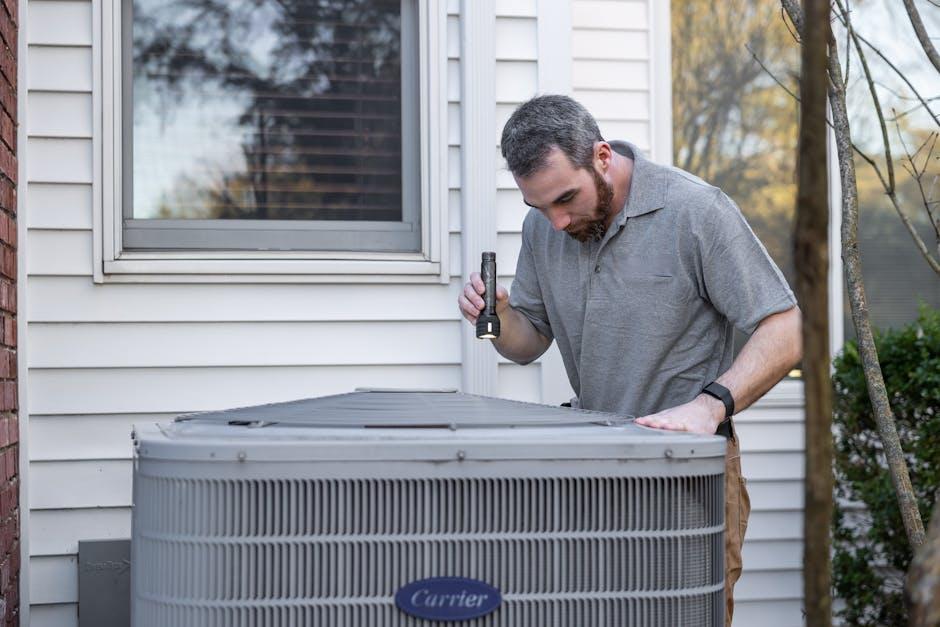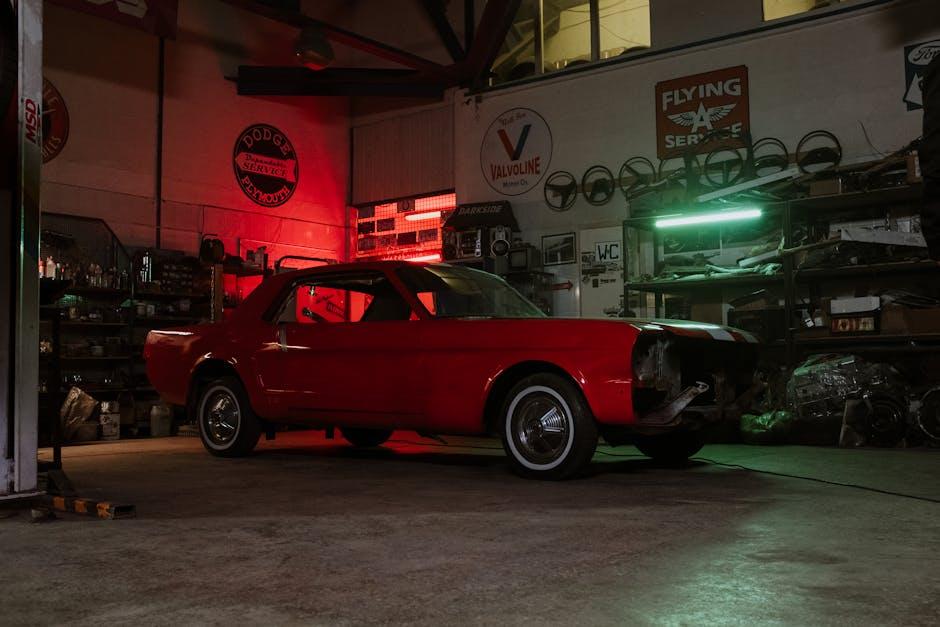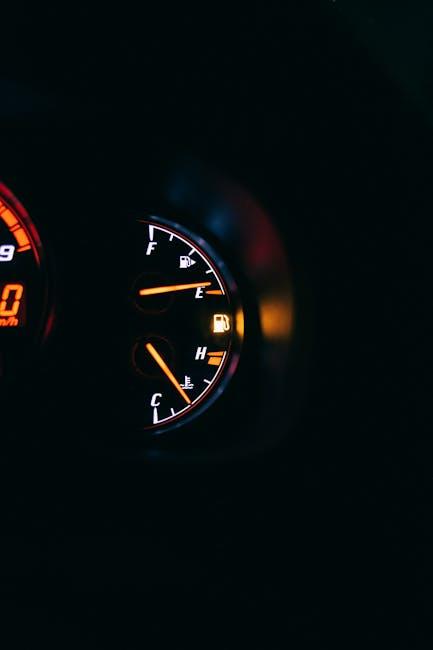Beneath the hood of every vehicle lies a complex symphony of metal, fuel, and motion working in harmony to power your journey. Yet, when that harmony is disrupted by an overheating engine, the consequences can range from a minor inconvenience to a costly disaster. Understanding how to prevent engine overheating is not just about protecting your car—it’s about ensuring safety, reliability, and peace of mind on every drive. In this article, we’ll explore practical strategies and essential maintenance tips that keep your engine cool under pressure, helping you avoid the hazards of heat and keep your vehicle running smoothly.
Table of Contents
- Understanding the Core Causes of Engine Overheating
- Maintaining Your Cooling System for Optimal Performance
- Choosing the Right Coolant and How to Replace It
- Signs of Overheating Every Driver Should Recognize
- The Role of Radiator and Thermostat in Temperature Control
- Practical Driving Habits to Keep Your Engine Cool
- Q&A
- To Wrap It Up

Understanding the Core Causes of Engine Overheating
When an engine runs hotter than usual, it’s usually the result of several interconnected issues rather than a single cause. One of the primary culprits is coolant system failure, which includes problems like leaks, low coolant levels, or a malfunctioning thermostat. A stuck thermostat can prevent coolant from flowing correctly, trapping heat within the engine. Additionally, a clogged radiator reduces the cooling efficiency, causing the engine temperature to spike. Keep an eye on these components regularly to ensure they are functioning optimally and prevent unexpected breakdowns.
Another major contributor to engine overheating is engine oil degradation. Oil serves not only as a lubricant but also as a heat dispersant. When engine oil becomes dirty or breaks down, it loses its capability to properly cool and protect engine components. Other factors include airflow blockages around the radiator and mechanical faults like a failing water pump. Below is a quick reference table of common causes with potential signs:
| Cause | Common Signs | Immediate Check |
|---|---|---|
| Low Coolant | Sweet smell, overheating gauge | Inspect coolant reservoir |
| Faulty Thermostat | Engine temp rises quickly | Test thermostat function |
| Oil Degradation | Dark oil, engine knocking | Check and replace oil |
| Radiator Blockage | Reduced airflow, overheating | Clean radiator fins |

Maintaining Your Cooling System for Optimal Performance
Keeping your vehicle’s cooling system in peak condition is essential for avoiding costly repairs and ensuring your engine runs efficiently. Regularly check the coolant level and top it off with the recommended type to maintain proper temperature regulation. Don’t overlook the radiator cap, as a faulty seal can lead to leaks and pressure loss. Flushing the cooling system periodically is another key step, as it helps remove rust, scale, and debris that accumulate over time, potentially clogging hoses and reducing heat dissipation.
Simple maintenance tasks to prioritize include:
- Inspecting hoses for cracks, leaks, or softness.
- Confirming the thermostat opens and closes correctly.
- Cleaning the radiator fins to allow maximum airflow.
- Checking the water pump for signs of wear or leakage.
| Maintenance Task | Recommended Interval | Signs It’s Needed |
|---|---|---|
| Coolant Flush | Every 2 years / 30,000 miles | Coolant discoloration, overheating |
| Hose Inspection | Every oil change | Bulges, cracks, leaks |
| Thermostat Check | Every 50,000 miles | Temperature fluctuations, heater issues |
| Water Pump Check | At 60,000 miles or during timing belt change | Coolant leaks, noise from pump |

Choosing the Right Coolant and How to Replace It
Selecting the perfect coolant requires understanding the type of engine in your vehicle and the climate you drive in. Generally, coolants come in three types: Inorganic Additive Technology (IAT), Organic Acid Technology (OAT), and Hybrid Organic Acid Technology (HOAT). Each offers unique benefits such as corrosion protection, extended life, or compatibility with aluminum parts. Using the wrong type can cause engine corrosion or reduce the coolant’s effectiveness, leading to overheating. Always check your owner’s manual or speak to a professional mechanic to find the best match for your engine’s cooling system.
When it comes time to replace the coolant, preparing your vehicle properly can make the process clean and efficient. Follow these steps for a successful coolant change:
- Ensure the engine is completely cool before opening the radiator cap.
- Drain the existing coolant into a sealable container to dispose of it responsibly.
- Flush the radiator with distilled water if necessary to remove any deposits.
- Refill with the recommended coolant concentration, often a 50/50 mix with water.
- Bleed the cooling system to remove air pockets that can cause hotspots.
| Step | Key Tip |
|---|---|
| Drain | Collect old coolant in a sealed bin |
| Flush | Use distilled water to clean passages |
| Refill | Use proper coolant-to-water ratio |
| Bleed | Remove trapped air fully |

Signs of Overheating Every Driver Should Recognize
Keeping an eye on your vehicle’s temperature gauge is crucial, but some warning signs go beyond the dashboard. When your engine begins to overheat, you might notice a sudden rise in the temperature needle, but also listen for unusual sounds such as a persistent ticking or knocking noise coming from the engine bay. These sounds indicate strain and potential damage due to excessive heat. Additionally, a strong, sweet smell resembling syrup often signals leaking coolant, which can quickly exacerbate overheating. Pay attention to steam or white smoke billowing from under the hood — a clear visual cue that your engine is struggling to keep cool.
Aside from these sensory signals, certain physical symptoms of overheating can be spotted while driving. If your air conditioning starts blowing warm air or loses its cooling power, it may be diverting heat away from the engine less efficiently. Sudden loss of power or engine hesitation during acceleration can also hint at overheating problems. Below is a quick reference table of common signs every driver should recognize:
| Symptom | What it Indicates |
|---|---|
| Rising Temperature Gauge | Engine running too hot |
| Persistent Engine Noise | Internal engine stress |
| Steam from Hood | Coolant boiling or leaks |
| Warm AC Air | Cooling system strain |
| Sweet Syrup Smell | Coolant leak |

The Role of Radiator and Thermostat in Temperature Control
At the heart of your vehicle’s temperature regulation lies a dynamic duo: the radiator and the thermostat. The radiator acts as a heat exchanger, dispersing the heat absorbed by the coolant throughout the engine. As the engine operates, it generates intense heat, and without a way to release this energy, overheating is inevitable. The radiator ensures that the coolant, warmed up by circulating through the engine, cools down effectively before being recirculated. It achieves this by passing the hot fluid through thin tubes surrounded by fins, which maximize surface area and promote efficient heat loss into the surrounding air.
Complementing the radiator, the thermostat is a precise temperature sensor and valve that controls coolant flow based on engine temperature. When the engine is cold, the thermostat remains closed, allowing the temperature to rise quickly to an optimal operating point. Once the coolant reaches its designated heat threshold, the thermostat opens, permitting the fluid to flow to the radiator for cooling. This coordination ensures consistent engine temperatures, protects components from thermal stress, and enhances fuel efficiency. In essence, both parts serve as vigilant guardians, maintaining balance to prevent the dreaded engine meltdown.
- Radiator: Cools engine coolant through airflow and fins.
- Thermostat: Regulates coolant flow based on temperature.
- Synergy: Maintains stable engine temperatures.
| Component | Function | Impact on Overheating |
|---|---|---|
| Radiator | Heat dissipation | Prevents excessive heat buildup |
| Thermostat | Temperature regulation | Ensures engine heats properly before cooling |

Practical Driving Habits to Keep Your Engine Cool
Adopting certain driving behaviors can significantly reduce the risk of your engine overheating. First, be mindful of your acceleration patterns: avoid sudden, aggressive starts and rapid increases in speed, as these actions demand excessive engine power and generate extra heat. Maintaining a steady speed, particularly in stop-and-go traffic, allows your cooling system to work efficiently. Also, try to limit driving in extreme heat conditions when possible, or plan trips during cooler parts of the day to reduce stress on your vehicle.
Another key habit is to be vigilant with your vehicle’s coolant system maintenance between drives. Running low or using improper coolant can undermine engine cooling. Keep an eye on the temperature gauge and if it creeps toward the red zone, take a break to let the engine cool. Remember these quick tips for better engine health:
- Use the correct grade of motor oil for your vehicle
- Check radiator and hoses regularly for leaks or blockages
- Engage the heater during traffic jams to disperse heat
- Avoid overloading your car, which can force the engine to work harder
Q&A
Q: What causes an engine to overheat?
A: Engine overheating usually happens when the cooling system can’t keep up with the engine’s heat output. Common culprits include low coolant levels, a malfunctioning thermostat, a failing water pump, clogged radiator, or a broken cooling fan.
Q: How often should I check my coolant levels?
A: It’s wise to check your coolant level every month or before long trips. Coolant gradually depletes over time, so topping it up and inspecting for leaks keeps your engine happy and cool.
Q: Can I use any type of coolant for my car?
A: Not exactly. Different vehicles require specific types of coolant, often based on the materials used in the engine and cooling system. Always consult your owner’s manual to pick the right coolant.
Q: What signs indicate my engine might be overheating?
A: Look out for a rising temperature gauge, steam coming from under the hood, a sweet smell (coolant leak), a warning light on the dashboard, or unusual engine noises. Early detection helps avoid serious damage.
Q: How can I prevent engine overheating during a hot day or heavy traffic?
A: Avoid heavy acceleration and idling for long periods. Keep your AC usage moderate, and if stuck in traffic, periodically engage the heater to help dissipate heat. Regularly maintain your cooling system to ensure peak efficiency.
Q: Is it harmful to keep driving with an overheating engine?
A: Yes, continuing to drive can cause severe engine damage, including warped cylinder heads or a blown head gasket. If your engine overheats, pull over safely, let it cool down, and seek professional help.
Q: What maintenance habits help prevent engine overheating?
A: Stick to scheduled coolant flushes, inspect and replace worn hoses, ensure the radiator is clean and unobstructed, test the thermostat and water pump periodically, and verify that cooling fans activate properly.
Q: Can a clogged radiator cause overheating?
A: Absolutely. Dirt, debris, or corrosion can block airflow or coolant flow inside the radiator, reducing its efficiency and driving up engine temperature.
Q: What role does the thermostat play in preventing overheating?
A: The thermostat regulates coolant flow to the radiator based on temperature. A faulty thermostat might stay closed, trapping heat inside the engine and causing it to overheat.
Q: Should I wait for the engine to cool down before checking the coolant?
A: Definitely. Opening the radiator cap or coolant reservoir when the engine is hot can cause hot steam or coolant to spray out, resulting in injury. Always let the engine cool for at least 30 minutes before checking.
To Wrap It Up
In the delicate dance between metal and heat, your engine’s well-being depends on mindful care and timely attention. By understanding the signs, maintaining cooling systems, and embracing simple habits, you empower your vehicle to run smoothly through every journey. Engine overheating may seem daunting, but with a balanced blend of prevention and awareness, you keep the flames at bay—ensuring both your engine and your peace of mind stay cool and steady on the road ahead.

